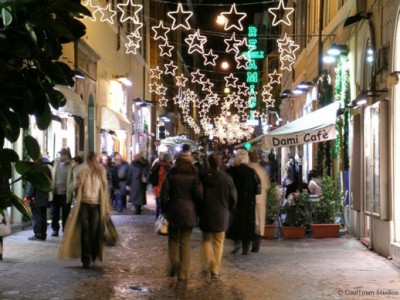An ideal Creative Products District program?

Louisiana’s Cultural Districts Program has set the bar for government policy innovation in terms of both identifying a cultural district, then providing incentives for it. It’s the first step towards growing a creative economy, but what could the next step be?
First step:
1. Identify cultural products districts using internal criteria (Louisiana’s state program)
2. Local and state sales taxes exemptions on the sale of original artworks (Louisiana’s state program)
3. Income and corporate tax credits for the rehabilitation of historic buildings (Louisiana’s state program)
4. A streets to plaza program (New York City Department of Transportation)
Second step: (to attract creatives that become gazelles – businesses that grow 20% yearly)
1. Identify creative products districts using internal criteria and that of natural cultural districts.
2. Local and state sales tax exemptions on the sale of original artworks, as well as inventions and creations, including packaged food products, music recordings and customized furniture. Why? Local design and innovation is encouraged, and money isn’t leaving the state whenever these products are sold, more than made up by the tax exemptions.
3. Income and corporate tax credits for the rehabilitation of historic buildings and tiered tax credits for smaller (and green) housing units where tax credits increase as housing units below 600 s.f., 500 s.f. and 400 s.f. are built without parking requirements. Why? Smaller units allow a wider range of incomes to purchase (or to rent from the owners), use less energy, and because their small size can eliminate the need for parking altogether, like Cubix Yerba Buena in San Francisco.
4. Establish a creative content Long Tail site (display every creative product available, help people find it) with collaborative filtering (rate and review products, which are then self-ranked like on Yelp! and YouTube). This should be standard in every city, and it allows larger companies to contract smaller companies.
5. Forget government-subsidized incubators, cities should help entrepreneurs establish coworking sites and instead of paying their rent, provide assistance through marketing and introducing the smaller creative firms to the larger firms seeking innovative talent, services and products.
6. A streets to plaza program like in New York City that allows the kind of pedestrian-only portal where it all comes together as a vibrant place. Policy doesn’t get much better than this.

Leave a Reply